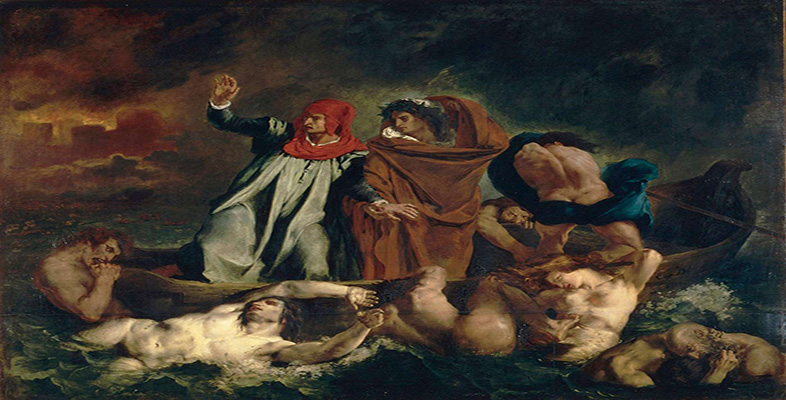6.3 Western perceptions – Oriental stereotypes
The sympathy of Byron, Delacroix and others for the Greeks, in their recent wars with the Turks, had become by 1824 a major concern of all European liberal opinion. This relates to a further Orientalist strand of thought inherited from the eighteenth century: the myth of the Turks as superstitious ‘barbarians’ and enemies of enlightened classical civilisation. Although there had been political alliances between France and the Ottoman empire, there was a residual fear of ‘Turks’ and Moors generated by memories of their victories at Constantinople (1453), their occupation of Spain (up to the end of the fifteenth century) and a continuing awareness of their potential to seize power which was to persist into the twentieth century. Napoleon’s troops murdered thousands of Turks at Jaffa during his Egyptian or Middle Eastern campaign, allegedly as part of a ‘civilising mission’. This particular stereotype or caricature of the ‘barbarian’ came under strain in the Romantic era, however, as artists and writers appreciated the heroic skills of the Turks as warriors. For instance, in Delacroix’s Massacres of Chios (Plate 20) the Turkish cavalryman in the foreground injects (Romantic) energy into an otherwise inert, dejected scene so that it is not clear whether our sympathies should lie with the passive Greek victims whose corpses or dying bodies litter the painting, or with the heroic but deviant Turkish aggressor who sweeps in from the right. It was also common to associate Oriental peoples with fatalism and passivity. Massacres of Chios played on these multiple associations. It spoke to contemporary fears of the overthrow of Christianity by Islam and of the total occupation of Greece (symbolic of civilised antiquity) by the invading barbarian. And yet it is the Turk in Delacroi’'s painting who seems to embody freedom and beauty by contrast with the diseased and (politically) oppressed bodies of the Greeks.
Napoleon himself shared these complex, ambivalent attitudes towards the Turks and Orientals. On the one hand, as he aspired to rival the accomplishments of Alexander the Great, he saw them as barbarians in need of civilising influence; on the other, the Turks (and Islamic culture generally) were colourful and intriguing objects of imaginative fascination. We can see something of these changing, complex attitudes in another Orientalist painting completed by Delacroix, The Combat of the Giaour and Hassan (1826) (see Plate 42), one of several works on the same theme roughly contemporary with his other Byronic subject, Sardanapalus. The painting is based on Byron’s poem, The Giaour: A Fragment of a Turkish Tale (1813). (Delacroix was as attracted to the poetry of Byron as he was to Goethe, and this attraction remained strong throughout his life.) In this heroic tale of late seventeenth-century Greece, a slave, Leila, flees the harem of a Turkish pasha (a high official of the Ottoman empire), Hassan. She goes to her Venetian warrior lover, the Giaour (a nickname given by Turks to non-Muslims), but is discovered, captured and thrown into the sea. The painting shows the Giaour seeking revenge: he ambushes Hassan and kills him in single combat. Hassan is both oppressive barbarian and energetic warrior, rushing towards us on his fiery steed. His exotic dress and flamboyant pose would have allowed western observers to flirt with notions of transgressive actions – that is, to abandon conventional boundaries of culture, gender and behaviour.
Click to see Plate 20: Eugène Delacroix, Massacres of Chios [Tip: hold Ctrl and click a link to open it in a new tab. (Hide tip)]
Click to see Plate 42: Eugène Delacroix, The Combat of the Giaour and Hassan
